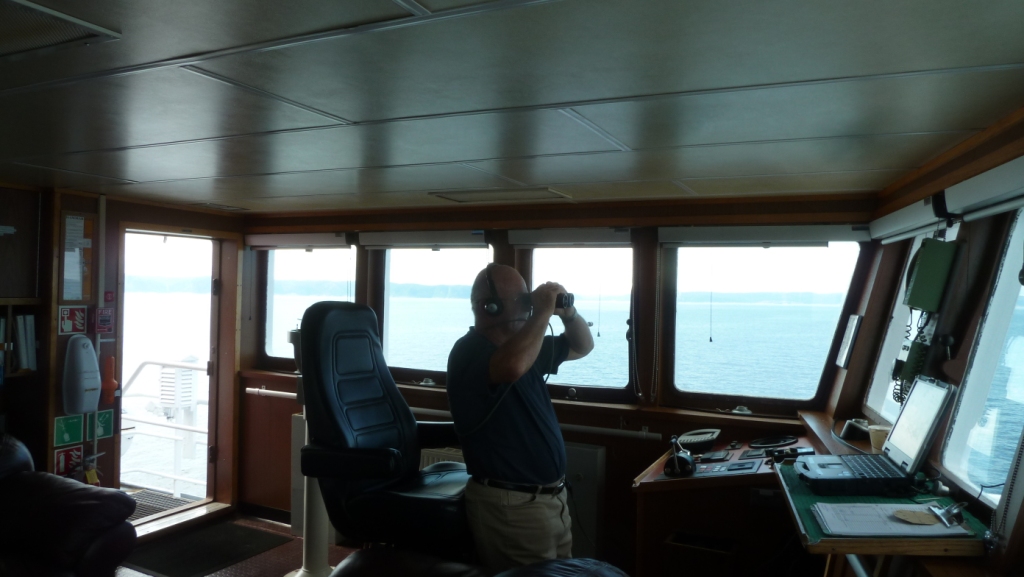
I have just finished spending 49 days of my Summer at sea – in the North Atlantic, ranging from southwest Nova Scotia to the east coast of Labrador and anywhere from a few miles to 470 miles offshore. My job? Count seabirds (well, any birds actually) following a stringent protocol so that not only the presence or absence of various species can be determined but also so that the density of particular species – i.e., the number of birds per square kilometer – can be assessed. These numbers produce the data required to give reasoned responses to questions of declines/increases in bird numbers as well as indicators of areas that are important to particular species (and might require being set aside as reserves). Also, when coupled with fish and oceanographic data (the main reason for the research vessels being on the water in the first place), the dynamics of seabird ecology in Canadian waters can be more carefully sorted out.
Counting seabirds at sea requires that you stand on one side of the bridge of a seagoing vessel (in my case, Canadian Coast Guard/DFO research ships) and simply watch the waters ahead and to the side – for me, the port side. When a bird is seen, it is identified (at least to genus, preferably to species – not always easy for birds like storm-petrels as they flit amongst the waves half a mile away), its proximity to the ship determined, and note is made of whether it is flying or sitting on the water. There are some other pieces of information that one might also record: what the bird is “associated” with (feeding dolphins, a piece of floating wood, etc.); elements of behaviour (feeding style, whether it flies or dives to escape the ship, etc.); age; aspects of plumage (dark/light morph, moulting, etc.).
As well as birds, I record whale/dolphin sightings, some fish species, turtles, jellyfish, and…….garbage.
Sometimes, you can get really busy like when a pod of Atlantic White-sided Dolphins hits upon a school of bait fish. Then all hell breaks loose and birds from everywhere head to the scrum to grab what they can. But most of the time the ocean is largely empty and you can go for good periods of time without seeing anything. But the important thing is that you are always watching from sun up till sun down and, in doing so, you never know what you might see. Here’s a smattering of examples taken from all 3 outings from early June to mid-August:
• Giant sunfish, Mola Molas, were occasionally seen lying flat on the surface or, rarely, with a dorsal fin flapping about above the surface.
• Close to the Gulf Stream I saw loads of Cory’s Shearwaters and a group of >30 Manx Shearwaters mixed in with them sitting on the water (I usually saw Manx Shearwaters as single birds…when I saw them at all).
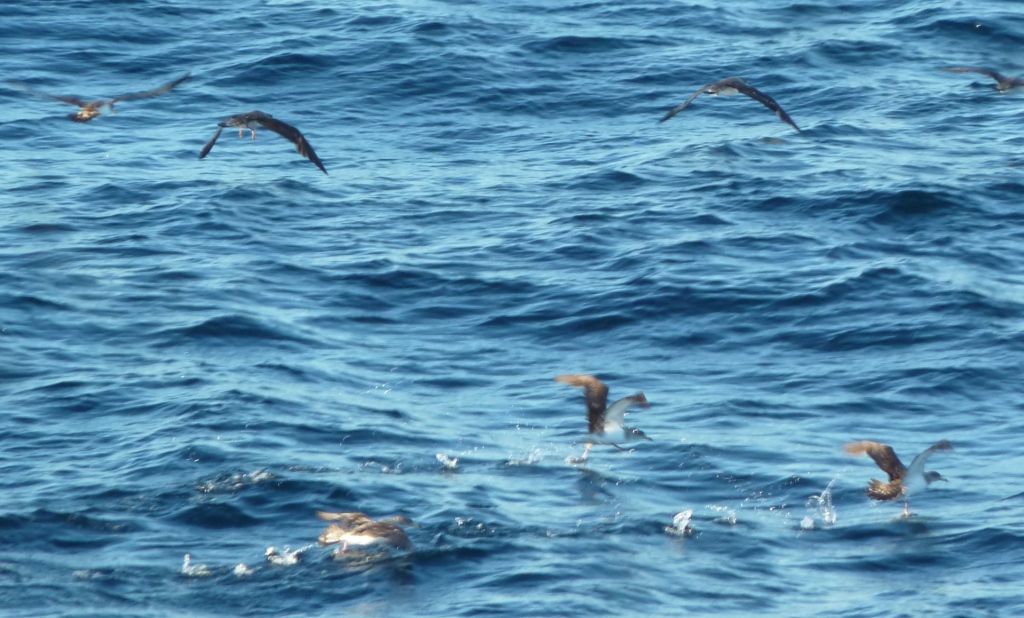
• Also close to the Stream, on one day there were hundreds of Portuguese Men-of War. In the sun they looked like plastic water bottles bobbing on the surface.
• 70 miles off the coast a juvenile Barn Swallow flew around the ship. Ten miles from Sable Island we picked up a Red-breasted Nuthatch and well outside St. John’s harbour we carried a Yellow-bellied Flycatcher.
• Skuas and jaegers are always of interest….and not often seen. I occasionally saw both Great and South Polar Skuas as well Pomarine and Long-tailed Jaegers (these last ones usually in the proximity of Arctic Terns).
• From my notes on a very stormy day: “Trying to make the discrimination between Leach’s Storm-petrels and Wilson’s Storm-petrels in 30-knot winds and 4-meter seas is like trying to identify ‘confusing Fall warblers’ while riding a bucking horse that keeps plunging into waterfalls.”
• 2 Whimbrel passed the ship well offshore – headed for northern Newfoundland.
• The deep trawls of fishing expeditions always produced interesting finds:
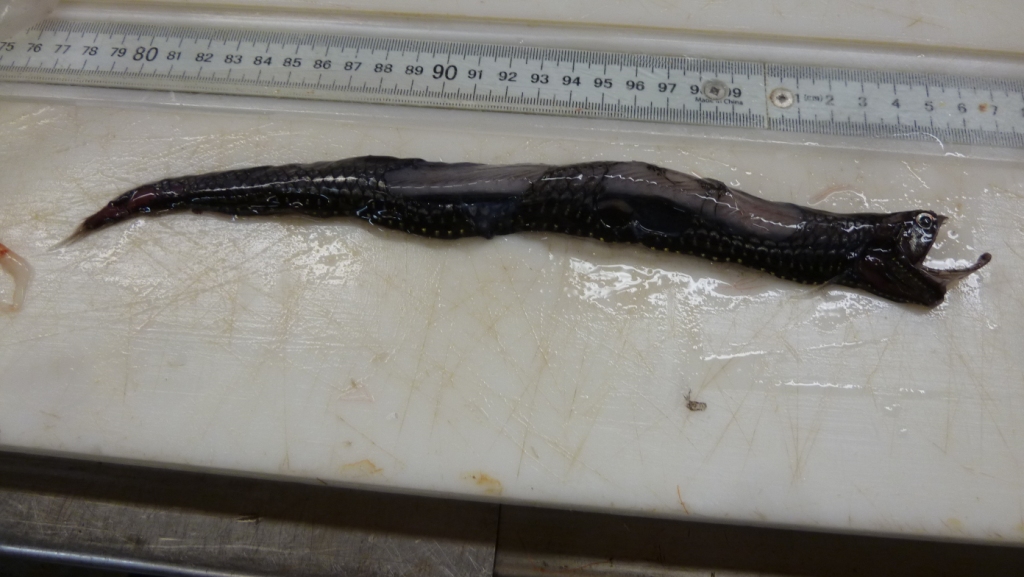
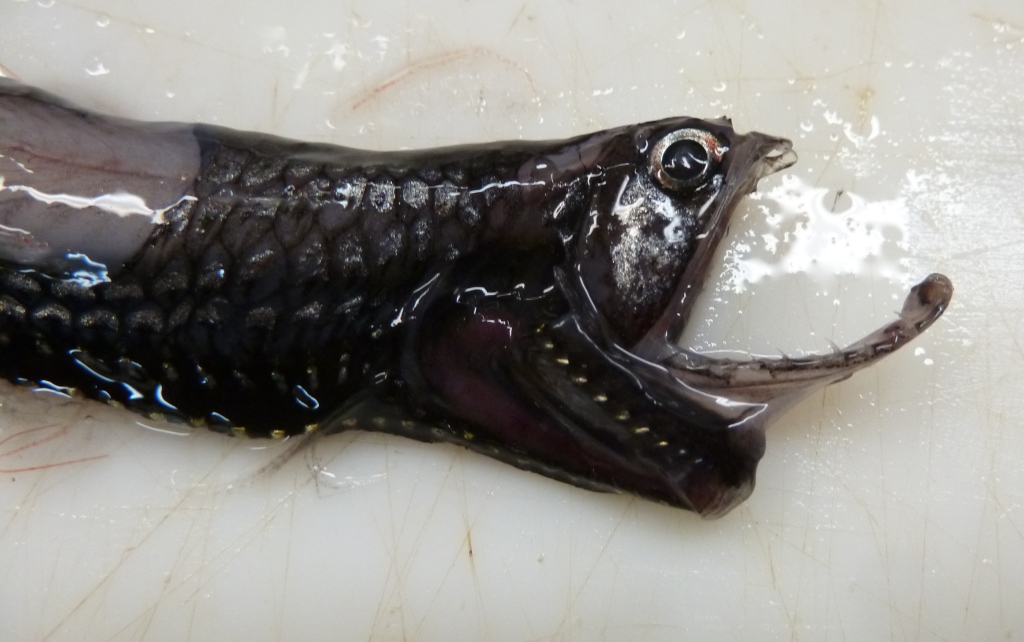
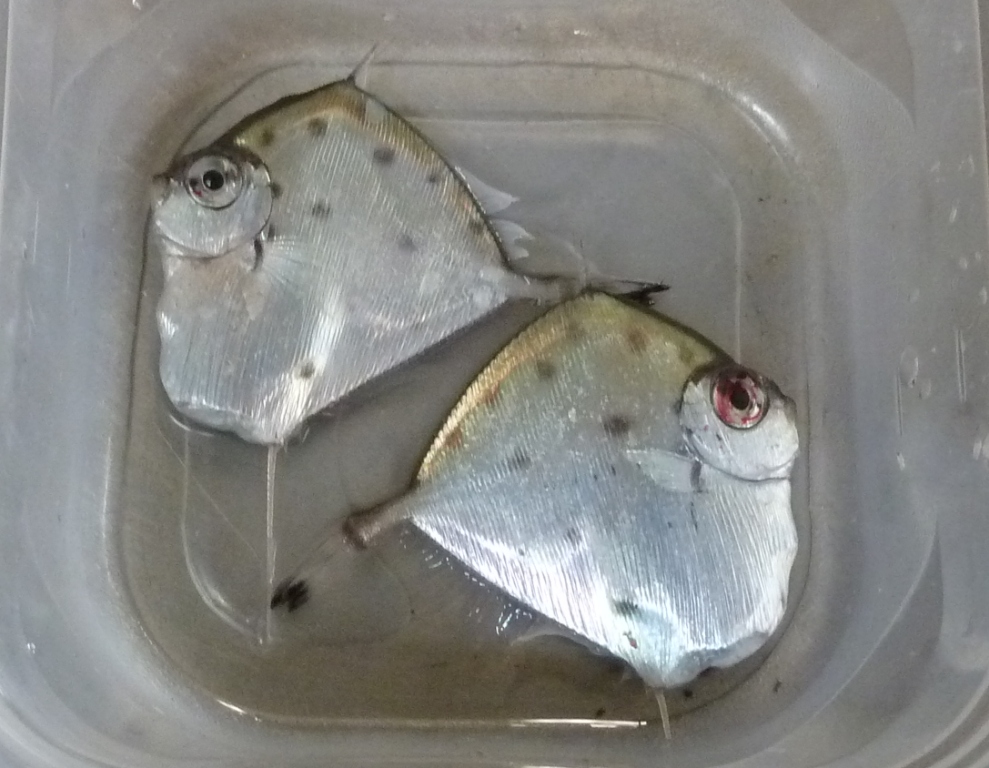
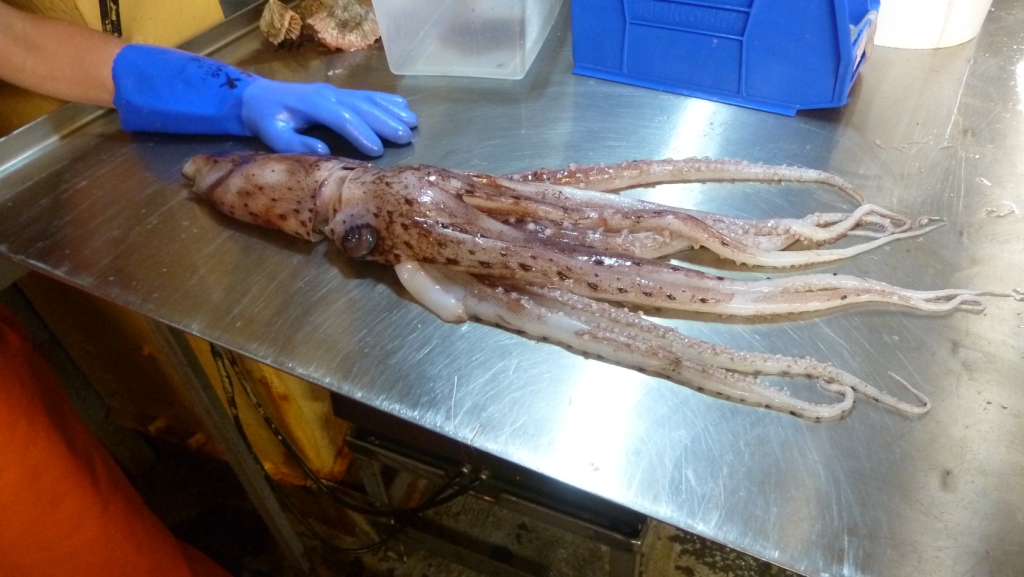
• Leaving St. Anthony (far northern Newfoundland) I watched a pod of Atlantic White-sided Dolphins feeding right beside the ship in the calm water at dusk – a beautiful night! Suddenly they were up and speeding away from the ship at great speed. In no time they were half a mile ahead of the ship and still going for all they were worth. Five minutes later, the cause of their panic became obvious – a pod of 7 Orcas moved into the area they had just left….and seemed to content to feed on whatever was there; they never gave chase.
• Atlantic White-sided Dolphins are quite common offshore in these waters. They are called “jumpers” by the deck hands because of their habit of jumping completely out of the water, sometimes multiple times in a row. On one occasion, in calm seas, well ahead of me, I saw a profusion of whitecaps. At first I thought it was an aberrant upwelling or the breeze blowing against a tidal flow but when I focused my binoculars I saw a line of dolphins 400 meters wide streaming at top speed toward the ship. There were easily over 150 of them. A few stayed to play for awhile, riding the bow wave, but most just kept going by.
• A few times, usually on foggy days, we had gulls land on the bow of the ship, catching a ride. On one occasion there was a Lesser Black-backed Gull and on another a “mystery” gull (suggestions as to ID would be welcome):
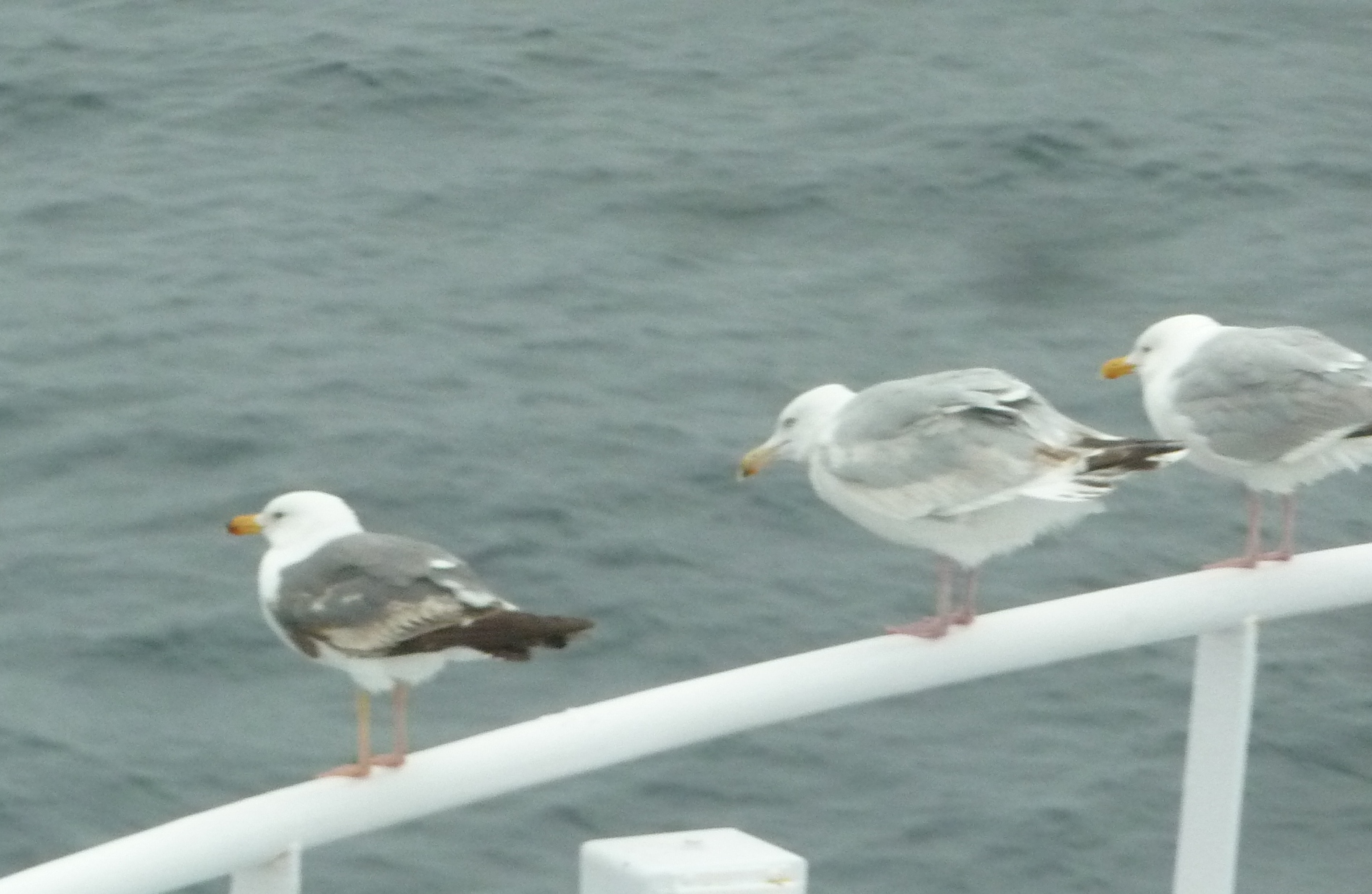
• Twice Humpback Whales put on a show. In the first instance two very large animals (males?) would take turns raising their tails and lower half of their bodies vertically out of the water before smashing it down on the surface producing a huge splash. Then the other would do the same….back and forth. Was this some sort of mating display or ritual? On another occasion a mother and calf took turns breaching completely out of the water, back and forth for over 10 minutes. Was their some practical reason for this or was it just a happy dance to start the day?
• I had never seen a Swordfish before so I was gob-smacked when one jumped completely out of the water only 150 meters directly in front of me. I hadn’t been seeing anything throughout the evening and then, whammo!, there it was. Deep iridescent blue on the back, brilliant white underneath, its sword slashing back and forth in the air – amazing! If I hadn’t been there watching, it would have passed completely unnoticed.
But the cruises are over and I’m a landlubber again. Time to get the nets up and ready for the coming Fall banding season at Ruthven. We will run from September 1st to November 7th. You’re always welcome…….
